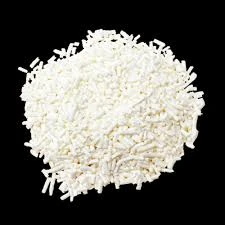
food stabilizer
Understanding Food Stabilizers Functions, Types, and Applications
Food stabilizers play a critical role in the food industry, serving as essential ingredients that enhance the texture, viscosity, and overall stability of various food products. These compounds help maintain the desired consistency and quality of foods over time, ensuring a pleasant experience for consumers. In this article, we will explore what food stabilizers are, the different types available, and their applications in the food sector.
What Are Food Stabilizers?
Food stabilizers are substances that are added to food products to stabilize their physical and chemical properties. They help to prevent separation of ingredients, control water activity, and improve the texture and mouthfeel of the product. By doing so, stabilizers contribute to the overall palatability and shelf life of food items. They can be derived from natural sources, such as plant gums and proteins, or synthesized chemically.
Functions of Food Stabilizers
1. Texture Enhancement One of the primary functions of food stabilizers is to improve the texture of food products. Hydrocolloids, such as agar, gelatin, and pectin, can modify the viscosity and mouthfeel of products, making them more enjoyable to consume. For example, in dairy products like yogurt, stabilizers help create a creamy texture that appeals to consumers.
2. Preventing Separation In emulsions, such as salad dressings and mayonnaise, stabilizers prevent the separation of oil and water phases. Emulsifiers like lecithin and mono- and diglycerides help create a stable mixture, keeping the product homogenous and visually appealing.
3. Moisture Retention Stabilizers can also help retain moisture in baked goods and processed foods, prolonging their freshness. Ingredients like xanthan gum or guar gum help retain water in formulations, reducing the risk of staleness.
4. Thickening Agents Many food stabilizers act as thickening agents, increasing the viscosity of liquids and sauces. Cornstarch, for instance, is commonly used in gravies and soups to provide a thicker, smoother consistency.
Types of Food Stabilizers
food stabilizer

Food stabilizers can be classified into several categories based on their sources and functions
1. Natural Stabilizers Derived from organic sources, these include plant-based gums (like xanthan gum, guar gum, and locust bean gum), proteins (such as gelatin and casein), and starches. Natural stabilizers are often favored for their clean label appeal and minimal processing.
2. Chemical Stabilizers These are synthetic compounds designed to perform specific functions in food preservation and texture enhancement. Examples include carboxymethyl cellulose (CMC) and modified food starch, which can be tailored to achieve desired properties.
3. Emulsifiers These substances help blend ingredients that typically do not mix, such as oil and water. Lecithin and polysorbates are common emulsifiers used not only for their stabilizing properties but also for enhancing mouthfeel.
4. Gel-forming Stabilizers These include agar-agar, gelatin, and pectin, used to create gel-like textures in products such as jellies, desserts, and gummy candies.
Applications of Food Stabilizers
Food stabilizers are widely used in various food products
- Dairy Products They ensure a consistent texture in yogurt, ice cream, and cheese spreads, preventing ice crystal formation and maintaining creaminess. - Sauces and Dressings Stabilizers help maintain uniformity and prevent separation, contributing to a visually appealing product. - Bakery Goods In bread and cakes, stabilizers improve moisture retention and shelf life, keeping products fresh longer. - Confectioneries Gels and gums are used to create sought-after textures in candies and jellies.
Conclusion
In summary, food stabilizers are vital components in the food industry, contributing to product quality, texture, and overall consumer satisfaction. With a diverse range of natural and synthetic options available, they enable manufacturers to create stable, appealing foods that meet the demands of modern diets. Understanding the functions and applications of food stabilizers can help consumers make informed choices about the products they consume and appreciate the science behind the foods they enjoy.
-
Understanding Synthetic Rubber OptionsNewsApr.27,2025
-
Trichloroisocyanuric Acid: Essential for Clean and Safe WaterNewsApr.27,2025
-
Sodium Dichloroisocyanurate: Key to Safe Water TreatmentNewsApr.27,2025
-
Sodium Acid Pyrophosphate: Essential in Modern Food ProcessingNewsApr.27,2025
-
Essential Water Treatment ChemicalsNewsApr.27,2025
-
Denatured Alcohol and Its Industrial UsesNewsApr.27,2025
-
The Versatile Uses of Sodium BicarbonateNewsApr.24,2025
Hebei Tenger Chemical Technology Co., Ltd. focuses on the chemical industry and is committed to the export service of chemical raw materials.
-

view more DiethanolisopropanolamineIn the ever-growing field of chemical solutions, diethanolisopropanolamine (DEIPA) stands out as a versatile and important compound. Due to its unique chemical structure and properties, DEIPA is of interest to various industries including construction, personal care, and agriculture. -

view more TriisopropanolamineTriisopropanolamine (TIPA) alkanol amine substance, is a kind of alcohol amine compound with amino and alcohol hydroxyl, and because of its molecules contains both amino and hydroxyl. -

view more Tetramethyl Thiuram DisulfideTetramethyl thiuram disulfide, also known as TMTD, is a white to light-yellow powder with a distinct sulfur-like odor. It is soluble in organic solvents such as benzene, acetone, and ethyl acetate, making it highly versatile for use in different formulations. TMTD is known for its excellent vulcanization acceleration properties, which makes it a key ingredient in the production of rubber products. Additionally, it acts as an effective fungicide and bactericide, making it valuable in agricultural applications. Its high purity and stability ensure consistent performance, making it a preferred choice for manufacturers across various industries.











